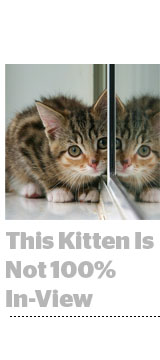 Measuring viewability can feel like a math class where each student has a different answer to the same problem. Each vendor employs different methodologies, which makes it difficult for publishers and advertisers to consistently agree on ad viewability.
Measuring viewability can feel like a math class where each student has a different answer to the same problem. Each vendor employs different methodologies, which makes it difficult for publishers and advertisers to consistently agree on ad viewability.
While the Media Ratings Council is working to iron out this problem – it even has a few reconciliation guidelines – publishers confront this issue every day.
Forecasting and discrepancies in measurement are the biggest challenges publishers face around viewability, according to digital consultancy 614 Group’s report, “Viewability: State of Operations Analysis and Vendor Study”.
“It’s time for a reset of expectations around viewability,” said 614 Group founder Rob Rasko. “Every single vendor answered that they measure in a slightly different way, and count NHT (non-human traffic) in a different way. If they’re all counting in a different way, how would you expect the numbers would match up?”
The stakes are high for publishers, since viewability measurements puts a huge amount of revenue on the line. Display ads on US desktops have an average in-view rate of 47.6%, according to data aggregated from each of the 14 vendors in the report.
Every MRC-accredited vendor uses different [deployments of known] methodologies to come up with its viewability number. The variable results from viewability vendors, in turn, pose challenges for publishers trying to forecast when advertiser X is using vendor Y and wants 70% viewability, while advertiser Z using vendor W wants 100% viewability.
Given the chaos created by different viewability measurement methodologies, Rasko said publishers should figure out what their viewability baseline rate is. “As a publisher you need to understand what you can deliver, and then what you can bring to market and transact,” Rasko said. “Understand that baseline.”
If a publisher is negotiating a contract requesting 70% viewability, that means very different things to publishers with baseline viewability rates of 50% and 65%, for example. For the publisher with a 65% baseline viewability rate, fulfilling that request may not be a big deal. But for the one with 50% viewability, delivering that campaign will require a lot of overdelivery.
When selecting a vendor, a publisher should know the methodology behind each vendor’s measurements. Is the vendor sampling the results, or measuring each impression? “We also heard about this waterfall concept, where vendors have a waterfall of methodologies they use. If browser paning doesn’t work, they go to the geometric method,” Rasko described.
Once a vendor is selected, publishers should use their knowledge about the vendor in negotiations, Rasko advised. If their vendor takes a strict line on non-human traffic as well as viewability, publishers should bring that to the negotiation table.
Publishers should also be able to explain why discrepancies occur during the reconciliation process, and use that knowledge to resolve those differences, Rasko said.
AdExchanger Daily
Get our editors’ roundup delivered to your inbox every weekday.
Daily Roundup
“A buyer may believe that a publisher with a 70% viewability rate is better than one with a 55% rate, but that same buyer can be persuaded otherwise if the first publisher uses a vendor that doesn’t remove fraud and relies on projections to measure the traffic,” the report stated.
Even if a publisher negotiates a favorable agreement between buyer and seller, it still risks not being able to deliver. Forecasting poses another challenge to publishers’ bottom lines. Planning tools don’t provide much to help with forecasting viewability. “People are just coming to grips with the operational requirements around viewability, on both sides,” Rasko said.
That puts buyers and sellers alike at the risk of underdelivery and the dreaded make-good. “The whole thing blows up because the measurement doesn’t add up, you can’t forecast. This is a problem for the buy side too,” Rasko said.
Solving the discrepancies around measurement and forecasting won’t come soon, but Rasko, like others, looks to another digital measurement crisis, ad server counts, as a historical precedent.
Eventually, vendors consolidated, measurement standardized, and buyers and sellers figured out how to get exactly what they paid for. But in the meantime, publishers must arm themselves with knowledge to ensure they don’t lose revenue as the standard shifts to viewable.













